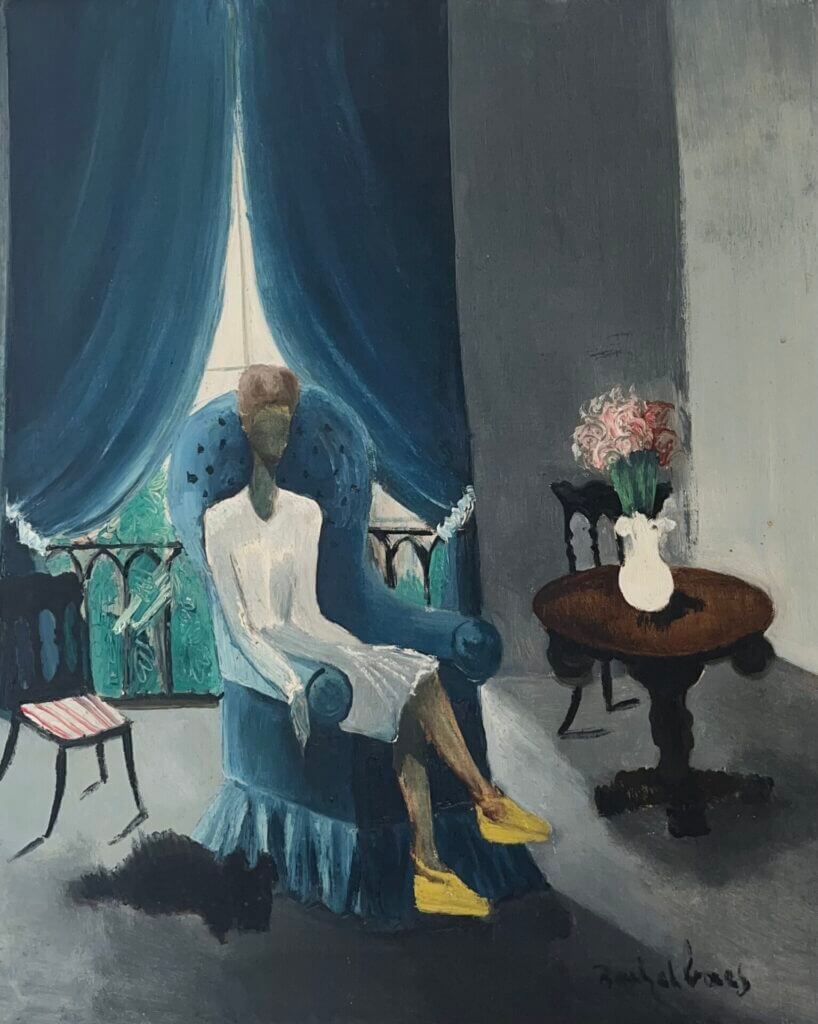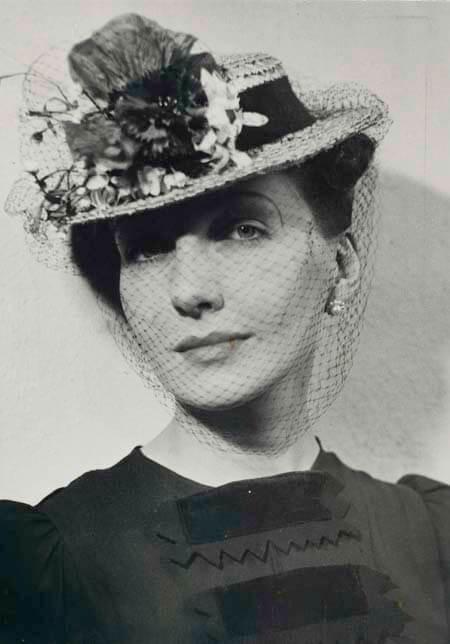Your currently viewing RAW Modern | Switch to RAW Contemporary
Interior, 1943
Catalogue essay by Blanche Llewellyn
“I am not a Surrealist painter, I am a Surrealist that paints” Rachel Baes wrote in her diary. This did not however prevent Baes from frequenting both the Surrealist circle in Brussels and the members of the French group. In 1945 she met Paul Éluard and his wife, Nusch, whose portrait she painted. The following year Éluard published a poem in which he described Baes: “As a lonely woman / Who draws instead of talking / In the desert / And so as to see before her […]”.
During that period, Baes associated with numerous artists and writers on the Parisian scene, among them Georges Bataille, Jean Cocteau, Marcel Lecomte, E. L. T. Mesens, and Magritte (she performed the role of muse in some of Magritte’s amateur films.)
Convinced of the merit of her work, Wifredo Lam even introduced her to Breton in 1952. Under his guidance, she exhibited the following year at the “A l’Étoile scellée” gallery in Paris.
“Interior” was painted in the French capital, where Baes lived, as a recluse grieving for her lover, Joris van Severen, founder in 1931 of the far-right Verdinaso (a Fascist political movement in Belgium) who, suspected of collaboration, had been shot in 1940 by the French military. “Interior” is likely to be a self-portrait, as this is a rare painting by the artist of a mature woman.
Following this tragedy, Rachel Baes abandoned the flower and landscape pictures that had earned her acclaim among her middle-class patrons. She now immersed herself in the dreamlike and sombre world of surrealism, channeling the pain she had endured: “The one and only freedom lies in dreams” she concluded at the time. Baes’ work became predominantly inhabited by female figures, and often young girls. Her universe, and subject matter, however, possesses neither the erotic connotations nor the childlike qualities that are present in many surrealist subjects, particularly in work by male surrealists. Nor are her women models depicted as an object of male desire or the masculine gaze. On the contrary, they are melancholic and dark – a direct reflection of her sense of anguish, loneliness – and mourning for van Severen.

